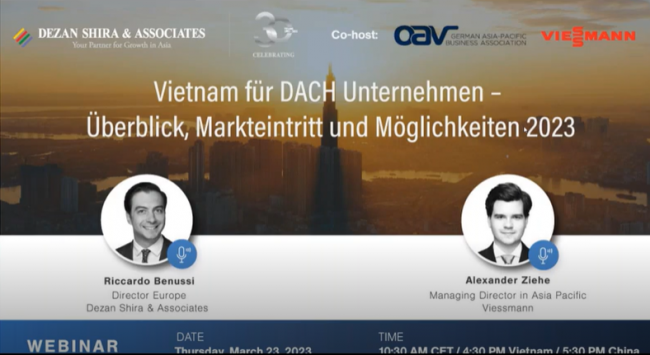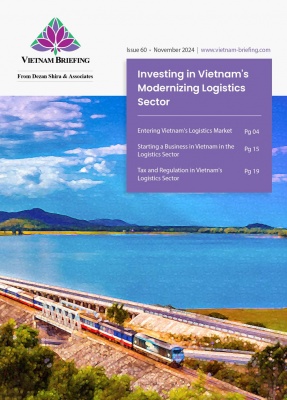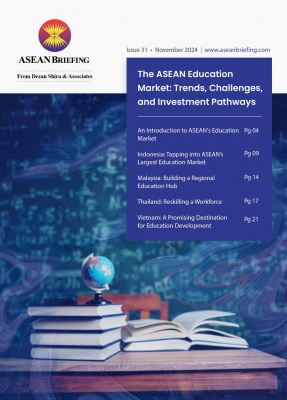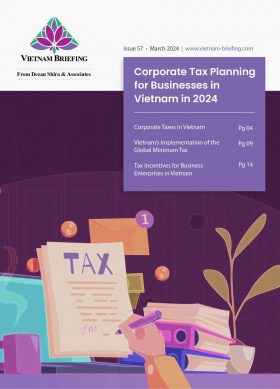CIT Incentives for Software Production and High-Tech Companies in Vietnam
Vietnam offers targeted Corporate Income Tax (CIT) incentives for both software production and high-tech companies to boost technological advancement. Software production benefits include preferential tax rates and exemptions, while high-tech enterprises can access broader incentives like tax holidays and financial support under Decree 13.
Vietnam’s IT and high-tech sectors have emerged as critical drivers of the country’s economic growth, attracting significant investment and fostering innovation. As the Vietnamese government continues to prioritize these industries, a range of CIT incentives has been introduced to support companies involved in software production and high-tech activities. These incentives are designed to encourage the development of technology-driven businesses, making Vietnam an increasingly attractive destination for both local and international investors.
However, navigating the complexities of CIT incentives can be challenging. Companies must meet specific criteria and adhere to various regulations to qualify for these benefits. Recent trends have shown an increase in scrutiny by tax authorities, particularly concerning compliance with the requirements for CIT incentives. This has led to a growing number of inquiries from businesses seeking clarity on how to ensure they meet the necessary standards.
In this article we provide a clear and comprehensive guide to understanding the CIT incentives available for software production and high-tech companies in Vietnam. To do so, we explore the legal framework, eligibility criteria, and the specific benefits offered, while also addressing common challenges and providing practical advice for maintaining compliance. Business owners, tax professionals, and investors can utilize this guide to navigate the complexities of Vietnam’s CIT incentives more effectively, enabling them to make well-informed decisions for their companies.
Overview of CIT incentives in Vietnam
CIT incentives are among the most attractive features of Vietnam’s business landscape, playing a crucial role in attracting foreign investment. These incentives are designed to promote investment in sectors and regions that align with the country’s national development strategies. Both foreign and local investors can benefit from these incentives, which are detailed in Vietnam’s Law on Investment, along with its accompanying decrees and circulars.
Vietnam offers two primary types of CIT incentives:
- Preferential tax rates: These are reduced tax rates applied to qualifying projects, which can vary based on the industry, location, and investment zone. The duration of these rates can range from a set number of years to the entire lifespan of the project.
- Tax holidays: These are periods during which businesses are exempt from paying CIT (“tax exemption”, followed by periods where they pay reduced tax rates (“50% tax reduction”). The length and terms of these tax holidays depend on the specifics of the project and its alignment with government priorities.
Legal framework for CIT incentives in Vietnam
Understanding the legal framework is crucial for businesses aiming to benefit from CIT incentives in Vietnam. The following key legal documents outline the criteria, conditions, and processes for obtaining these incentives, particularly in the context of high-tech and software-related activities:
- Circular 13/2020/TT-BTTTT: This Circular, issued by the Ministry of Information and Communications, sets out the specific activities that qualify as software production for the purposes of CIT incentives. It introduces a precise definition of software production, requiring businesses to engage in key steps such as Requirement Determination or Analysis and Design to be eligible.
- Circular 09/2013/TT-BTTTT (Amended by Circular 20/2021/TT-BTTTT): This Circular provides a list of software, hardware, and electronic products eligible for CIT incentives. It serves as a crucial reference for businesses to verify whether their products are included in the categories that qualify for preferential tax treatment. The amendments made by Circular 20/2021/TT-BTTTT update and expand this list, reflecting the evolving technological landscape and ensuring that Vietnam’s CIT regime remains aligned with current industry standards.
- Decree No. 218/2013/ND-CP: It outlines the implementation of the Corporate Income Tax Law, with a focus on incentives for software production activities. It provides detailed criteria for what constitutes a software production enterprise and specifies the associated CIT incentives, such as reduced tax rates and tax holidays.
These documents collectively form the cornerstone of the legal framework governing CIT incentives for software production and high-tech companies in Vietnam.
CIT incentives for software production activities
Vietnam offers significant CIT incentives to encourage the growth of the software industry. These incentives are designed to support software companies by reducing their tax burden and enhancing their competitiveness.
Eligibility criteria
To qualify for CIT incentives, software companies must meet specific criteria defined by Vietnamese law. Key eligibility requirements include:
- Compliance with legal framework: Companies must adhere to the definitions and requirements set forth in Circular 13/2020/TT-BTTTT, which outlines the activities that qualify as software production must perform at least one of two stages (namely, “Requirement Determination” and “Analysis and Design”). Please refer to “Software production stages” for more information.
Additionally, businesses should ensure that their products are listed in Circular 09/2013/TT-BTTTT (amended by Circular 20/2021/TT-BTTTT), which specifies eligible software, hardware, and electronic products. - Investment in new projects: CIT incentives apply to companies undertaking new investment projects in software production. The incentives are specifically designed for enterprises that are newly establishing software production activities or expanding their existing operations.
- Documentation: Companies must maintain thorough documentation of their software production processes. This documentation is crucial for demonstrating compliance with the required processes and for claiming CIT incentives.
Software production stages
As regulated, the manufacturing process of software products encompasses several critical stages, each essential for ensuring the development of high-quality, functional, and secure software. The process includes the following stages:
|
Key Stages of Software Production in Vietnam |
|
|
Stage |
Definition |
|
Requirement Determination |
This initial stage involves identifying and clarifying the needs and expectations for the software product. It includes: · Generating and refining ideas for the software. · Defining product characteristics and requirements. · Proposing, surveying, and validating requirements. · Analyzing operations and developing comprehensive requirement documents. · Consulting on procedural adjustments and consolidating requirements. · Approving and controlling requirements to ensure they meet compliance standards. |
|
Analysis and Design |
During this stage, the focus is on translating requirements into detailed design specifications. Key activities include: · Describing both functional and non-functional requirements. · Establishing development methodologies and selecting appropriate technologies. · Analyzing the feasibility and impact of the software on its operating environment. · Prioritizing requirements and updating them as necessary. · Creating models for data, functions, and information channels. · Designing the software architecture, including data structures, modules, security features, and user interfaces. |
|
Programming and Coding |
This stage involves the actual creation of the software: · Writing code for software and its components. · Customizing and adjusting the software as required. · Integrating various software modules and components to form a cohesive system.
|
|
Software Examination and Experimentation |
Testing and evaluation are crucial for ensuring software quality. |
|
Software Product Completion and Packaging |
Finalizing and preparing the software for distribution, which involves: · Creating product documentation, including user manuals and installation guides. · Packaging the software and registering intellectual property rights. · Preparing for the transfer of the software product to customers or distribution channels.
|
|
Software Product Installation, Transfer, Instruction, and Maintenance |
This stage ensures the software is properly set up and supported |
|
Publishing and Distributing Software Products |
The final stage involves bringing the software to the market, which may include selling, lending, distributing, and publishing the software to end-users or through distribution channels. |
Failure to comply with the aforementioned steps, tax authorities will raise a question on software production activities and refuse CIT incentives claimed by the software production companies in a tax audit event. Otherwise, the below is CIT incentives applicable for software production companies.
As a best practice, any company seeking tax benefits must seek confirmation from the tax authority for their eligibility to avail CIT incentives linked to software production. However, the tax authorities may not officially confirm the case and will ask the taxpayers to self-assess based on software production regulated by the Ministry of Information and Communications. It is prudent for all such companies to carefully read various regulatory guidelines and seek local professional advice on their eligibility to qualify for tax incentives to avoid risks of non-compliance.
Incentives details
Eligible software companies can benefit from the following CIT incentives, as illustrated the table:
|
CIT Incentives Available to Software Production Companies in Vietnam |
|
|
Type of incentive |
Description |
|
Preferential CIT rate |
Companies with new investment projects in software production are entitled to a preferential CIT rate of 10 percent for 15 years from the first year the project generates revenue. |
|
CIT exemption |
Software companies are exempt from CIT for the first four years from the year they start generating taxable income. If the company does not generate taxable income within the first three years, the exemption period begins in the fourth year following the project’s revenue generation. |
|
CIT reduction |
Following the CIT exemption period, companies are eligible for a 50 percent reduction in CIT for the next nine years. This effectively means that during this period, they will only pay a 5 percent CIT rate. |
|
Post-incentive period |
After the 15-year preferential period, companies will be subject to the standard CIT rate of 20 percent, as per the prevailing tax laws. |
These incentives are critical for reducing the tax burden on software companies, enabling them to reinvest in growth and innovation. Additionally, Vietnam offers other tax benefits, such as Value Added Tax (VAT) exemptions for software products. Together, these incentives create a favorable environment for the development of the software sector in Vietnam.
CIT incentives for high-tech companies
Certificate of High-Tech Enterprises
The Certificate of High-Tech Enterprise, issued by Vietnam’s Ministry of Science and Technology, is a key credential for businesses seeking significant tax and financial incentives in Vietnam. This certification recognizes companies that are engaged in high-tech and innovative activities, including those involved in mobile phones, electronics, and software development. The certification is essential for qualifying for the government’s extensive support programs aimed at fostering technological advancement and R&D activities.
The application procedures include:
- Preparing application documents: Submit an application form, notarized copies of relevant business certificates, explanations of compliance with high-tech criteria, and supporting documents such as financial statements, R&D activity reports, and workforce records.
- Submitting application: Apply in person, by post, or through the National Public Service Portal.
- Review and appraisal: The Ministry of Science and Technology reviews the application, seeks opinions from relevant authorities, and may request additional information if necessary.
- Issuance of certificate: The Ministry issues the certificate within 30 days of receiving a complete application. If denied, a written explanation is provided.
This certification not only facilitates access to tax and financial incentives but also positions companies as leaders in Vietnam’s high-tech sector.
Incentives for high-tech companies
High-tech companies holding the High-Tech Enterprise Certificate can access a range of incentives under Decree No. 13/2019/ND-CP (Decree 13).
Among other, these include up to four years of tax exemptions and a 50 percent reduction in corporate income tax for the subsequent nine years.
Additionally, other incentives include:
- Land rental exemptions and reductions: Financial relief from land rental costs.
- Preferential credit terms: Access to favorable credit conditions and financial support from national science and technology development funds.
- Support for R&D: Financial aid for R&D activities, including incentives for import-export duties and free use of equipment at national laboratories.
Differences between software production incentives and high-tech company incentives
While both software production and high-tech company incentives aim to stimulate investment and development, they cater to different aspects of the industry. Software production incentives specifically target businesses involved in the development and commercialization of software, offering tax exemptions and reductions as well as other benefits tailored to the software sector.
In contrast, high-tech company incentives under Decree 13 encompass a broader range of activities related to advanced technology and innovation, including more extensive support for R&D and technological advancements. The certificate distinguishes high-tech enterprises from general software production activities, enabling them to access more comprehensive and diverse incentives.
Conclusion
Companies seeking to leverage Vietnam’s CIT incentives should carefully navigate the complex regulatory environment. It’s essential to ensure compliance with specific criteria and maintain thorough documentation to qualify for benefits.
Consulting with tax professionals and staying informed about regulatory updates can help businesses maximize their advantages and align their strategies with Vietnam’s evolving investment landscape.
(With technical inputs from Doan Thi Yen Luy, Senior Tax Associate at Dezan Shira & Associates’ Vietnam.)
About Us
Vietnam Briefing is published by Asia Briefing, a subsidiary of Dezan Shira & Associates. We produce material for foreign investors throughout Asia, including ASEAN, China, and India. For editorial matters, contact us here and for a complimentary subscription to our products, please click here. For assistance with investments into Vietnam, please contact us at vietnam@dezshira.com or visit us at www.dezshira.com.
Dezan Shira & Associates assists foreign investors throughout Asia from offices across the world, including in Hanoi, Ho Chi Minh City, and Da Nang. We also maintain offices or have alliance partners assisting foreign investors in China, Hong Kong SAR, Dubai (UAE), Indonesia, Singapore, Philippines, Malaysia, Thailand, Bangladesh, Italy, Germany, the United States, and Australia.
- Previous Article Vietnam’s Emerging Infrastructure Projects: Spotlight on Quang Nam and Phu Yen
- Next Article Vietnam Government Seeks Domestic Market Development: Implications for E-Commerce






























